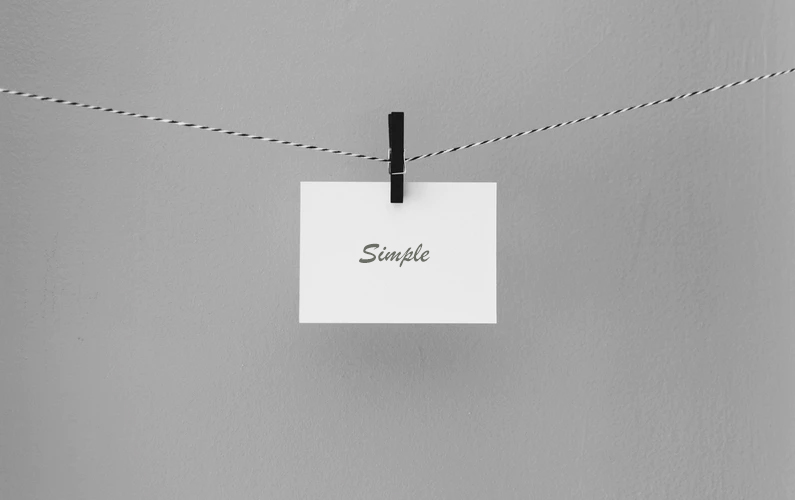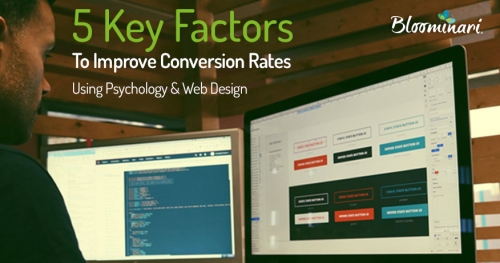1. Better Communication
Communication is the way you get your message across. In the case of web designers, it doesn’t have to be direct. Every psychologist will tell you that the most important way to make any kind of progress in connections is to improve communication. Your website is the way you communicate with your users. Having a clear and concise goal on your website is going to do wonders for your conversion.
How will you convey your website’s message to the user? Visual and auditory methods can do wonders if applied correctly. Use properly placed text to guide your user towards your mutual goals. Try to up the ante when it comes to communication on your website. Using your own intuition, try to figure out how your design will come across to a great majority of your user base. Improving it can seem like an abstract idea when building your website, but all you have to do is find the most common ground with your user and take advantage of that.
2. Symmetry is Key

At their core, humans are just animals. Animals have some specific traits that they like seeing in their surroundings and in their general environment. Symmetry is one of those crucial things. Symmetry denotes health and well-being. No matter how much further we’ve evolved, we still have some of those traits that make us similar to our animal counterparts. As a designer, you would be wise to take advantage of this fact.
Your website should feature symmetrical designs wherever that may be convenient. Balance and order have to be in sync with your website. The best way to establish symmetry is through simplicity. The simpler your design, the easier it is to make it attractive and symmetrical. However, this doesn’t mean your website should have one-half mirror the other half. It would be much more practical to simply start with the website template. A symmetrical and attractive website with one or two calls to action will be very effective.
3. Increase Page Load Speed
People can be pretty impatient at times. This goes double when it comes to interactions on the internet. If there’s a website out there that loads a fraction of a second faster, you can be absolutely sure that your users will take note of this. Speed is the name of the game when it comes to website efficiency. Users really do not like waiting.
As a designer, you will want to make your website as attractive as possible. You might add different elements that showcase your talent for visuals and optimization. At the same time, these elements could slow down your website. One of your main goals is to get as many people as possible to visit the website, which is why it might be in your best interest to cut down on those elements. This will keep your page load speed high and people will keep coming back.
4. Avoid Being Too Complex

People are fickle when it comes to their tastes. They want something that is simple to use, but not too simple to be boring. At the same time, complexity attracts a large user base for its uniqueness, but at the same time, it also bothers them if it’s too complex to use. One of the golden rules of web designs is to keep it simple where possible.
This can prove to be problematic if every website decides to keep it simple. How will you stand out compared to your competitors if everyone is doing the same exact things? Climbing out of this is just as difficult because if you make it too complex you could lose users. Finding the right kind of balance between intuitive and attractive isn’t easy to do on your own, which is why a lot of websites seek help from experts like Bloominari, a marketing and web design agency in San Diego to make it work. Several designers working on this kind of design might do the trick, but even then it’s a matter of creativity.
5. Keep the Number of Choices Low
If you want people coming back to your website, you have to make them feel welcome. Reducing the number of choices might not seem like the best way to do it, but you would be surprised by the results. People don’t like having too many choices offered to them on websites. It creates a sensory overload that makes them feel like there’s effectively nothing worth choosing. No matter what kind of website you want to build, you need to keep this in mind.
If you’re designing a retail business website, categorization is something you have to do. Different categories for different items lets you reduce the number of items on a single page, which reduces the agony of choice. Use categories and subcategories to create separate pages for every kind of specific niche. Any kind of website benefits from fewer choices per page. Even if you’re making a website for a law firm, you shouldn’t stick a bunch of links or contact numbers on one page. You would at least separate them by a lawyer or by specific law expertise. Apply this to all of your designs and users will feel more appreciated without even knowing it.
Conclusion
The perfect website isn’t designed using art skills alone. Web design is a combination of several different skills that all play a crucial part in this process. If you are able to properly apply psychological principles to your website designs, you will be a shoo-in to increase conversion rates.


